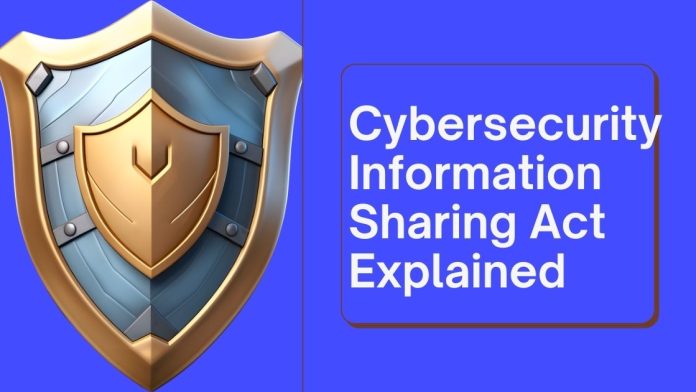The Cybersecurity Information Sharing Act (CISA) stands out as a key piece of legislation shaping how cybersecurity is managed across the United States. Whether you’re a business owner, IT professional, or simply a concerned citizen, understanding CISA is crucial in today’s digital landscape.
In this guide, we’ll explore what CISA is, why it was created, how it works, the controversy surrounding it, and what it means for you or your organization.
What is the Cybersecurity Information Sharing Act (CISA)?
The Cybersecurity Information Sharing Act, signed into law in December 2015, is a U.S. federal law that encourages the sharing of internet traffic information between the U.S. government and technology/manufacturing companies. The goal? To identify and respond to cybersecurity threats more efficiently.
In simpler terms: CISA enables private companies and government agencies to share cyber threat indicators and defensive measures with one another in real-time, helping both sides detect and defend against cyberattacks faster.
Why Was CISA Created?
1. Rising Cyber Threats
From data breaches at major corporations to ransomware attacks on critical infrastructure, the digital landscape has become increasingly dangerous. CISA was introduced to address the urgent need for coordinated threat intelligence.
2. Bridging the Public-Private Gap
Before CISA, government agencies and private companies often worked in silos. CISA aimed to create a legal framework that fosters trust and cooperation between both sectors.
3. Legal Protections for Sharing
Many companies were hesitant to share information with the government, fearing legal liability or loss of consumer trust. CISA provides liability protections for companies that share information in good faith, encouraging more participation in national cyber defense.
How Does CISA Work?
Under CISA, companies can voluntarily share cyber threat indicators (CTIs) and defensive measures (DMs) with government entities like the Department of Homeland Security (DHS), which then disseminates this data to relevant agencies (FBI, NSA, etc.) and other private entities.
What Are Cyber Threat Indicators (CTIs)?
These are signs of a cyber threat or incident. Examples include:
- Malware signatures
- Suspicious IP addresses
- Network traffic anomalies
- Known exploit patterns
What Are Defensive Measures (DMs)?
These are actions taken to protect against or mitigate cyber threats. For example:
- Firewalls
- Intrusion detection systems
- Email filtering protocols
Automated Information Sharing (AIS)
CISA supports Automated Information Sharing, where threat data is instantly shared across a trusted network without compromising privacy-sensitive information. This real-time sharing is a game-changer for reducing response times.
Benefits of CISA
1. Faster Threat Detection
By allowing real-time information exchange, CISA helps spot attacks early, before they spread or cause significant damage.
2. Collaborative Defense
CISA creates a network of defenders, where government agencies and businesses are not working in isolation but collectively fighting cybercrime.
3. Legal Protections
Businesses are protected from lawsuits when they share information responsibly, making them more willing to participate.
4. National Security Boost
With better cyber intelligence, the U.S. can strengthen its national defense posture, particularly against nation-state actors like China, Russia, and North Korea.
Criticisms and Controversies
Despite its intentions, CISA has faced criticism from privacy advocates, civil liberties organizations, and tech experts.
1. Privacy Concerns
Critics argue that CISA fails to adequately safeguard user privacy. Shared information might include personally identifiable information (PII) if not properly scrubbed, leading to fears of mass surveillance.
2. Broad Language and Loopholes
Some say the law’s vague language allows for overreach. For example, what constitutes a “cyber threat indicator” isn’t always clearly defined.
3. NSA Involvement
There’s worry that CISA could become a backdoor for the NSA and other intelligence agencies to collect data on citizens without warrants, reminiscent of concerns raised by Edward Snowden’s revelations.
What CISA Means for Businesses
If you run a business, particularly in healthcare, finance, manufacturing, or tech, CISA affects you in the following ways:
- Opportunity to collaborate with federal cybersecurity networks
- Potential cost savings from better threat mitigation
- Need to implement internal data-sharing protocols
- Compliance and governance adjustments to ensure responsible information sharing
CISA isn’t mandatory, but many cybersecurity frameworks and insurance providers now encourage or require some form of threat intelligence sharing aligned with the law.
How Individuals Are Affected
For the average internet user:
- Your data may be indirectly shared if it’s entangled in reported cyber incidents.
- There’s a trade-off between security and privacy; greater sharing may reduce threats but increase exposure.
- It’s essential to stay informed and support transparency in how your data is handled.
Final Thoughts
CISA represents a significant shift in how the U.S. approaches cybersecurity. It has enabled more collaboration, improved threat detection, and pushed cybersecurity to the forefront of national defense.
However, concerns around privacy and transparency must be continuously addressed. As cyber threats evolve, so must our laws and safeguards.

